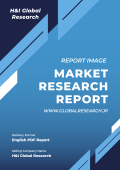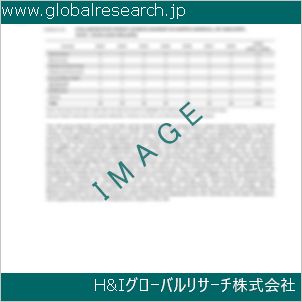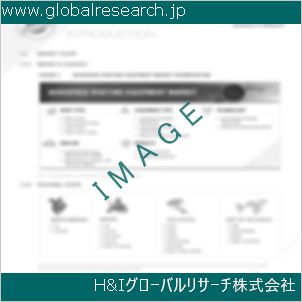Table of Contents
1 Industry Overview of Anthraquinone
1.1 Definition and Specifications of Anthraquinone
1.1.1 Definition of Anthraquinone
1.1.2 Specifications of Anthraquinone
1.2 Classification of Anthraquinone
1.3 Applications of Anthraquinone
1.3.1 Nuclear Application
1.3.2 Non-Nuclear Application
1.4 Industry Chain Structure of Anthraquinone
1.5 Industry Overview and Major Regions Status of Anthraquinone
1.5.1 Industry Overview of Anthraquinone
1.5.2 Global Major Regions Status of Anthraquinone
1.6 Industry Policy Analysis of Anthraquinone
1.7 Industry News Analysis of Anthraquinone
2 Manufacturing Cost Structure Analysis of Anthraquinone
2.1 Raw Material Suppliers and Price Analysis of Anthraquinone
2.2 Equipment Suppliers and Price Analysis of Anthraquinone
2.3 Labor Cost Analysis of Anthraquinone
2.4 Other Costs Analysis of Anthraquinone
2.5 Manufacturing Cost Structure Analysis of Anthraquinone
2.6 Manufacturing Process Analysis of Anthraquinone
3 Technical Data and Manufacturing Plants Analysis of Anthraquinone
3.1 Capacity and Commercial Production Date of Global Anthraquinone Major Manufacturers in 2023
3.2 Manufacturing Plants Distribution of Global Anthraquinone Major Manufacturers in 2023
3.3 R&D Status and Technology Source of Global Anthraquinone Major Manufacturers in 2023
3.4 Raw Materials Sources Analysis of Global Anthraquinone Major Manufacturers in 2023
4 Capacity, Production and Revenue Analysis of Anthraquinone by Regions, Types and Manufacturers
4.1 Global Capacity, Production and Revenue of Anthraquinone by Regions 2019-2024
4.2 Global and Major Regions Capacity, Production, Revenue and Growth Rate of Anthraquinone 2019-2024
4.3 Global Capacity, Production and Revenue of Anthraquinone by Types 2019-2024
4.4 Global Capacity, Production and Revenue of Anthraquinone by Manufacturers 2019-2024
5 Price, Cost, Gross and Gross Margin Analysis of Anthraquinone by Regions, Types and Manufacturers
5.1 Price, Cost, Gross and Gross Margin Analysis of Anthraquinone by Regions 2019-2024
5.2 Price, Cost, Gross and Gross Margin Analysis of Anthraquinone by Types 2019-2024
5.3 Price, Cost, Gross and Gross Margin Analysis of Anthraquinone by Manufacturers 2019-2024
6 Consumption Volume, Consumption Value and Sale Price Analysis of Anthraquinone by Regions, Types and Applications
6.1 Global Consumption Volume and Consumption Value of Anthraquinone by Regions 2019-2024
6.2 Global and Major Regions Consumption Volume, Consumption Value and Growth Rate of Anthraquinone 2019-2024
6.3 Global Consumption Volume and Consumption Value of Anthraquinone by Types 2019-2024
6.4 Global Consumption Volume and Consumption Value of Anthraquinone by Applications 2019-2024
6.5 Sale Price of Anthraquinone by Regions 2019-2024
6.6 Sale Price of Anthraquinone by Types 2019-2024
6.7 Sale Price of Anthraquinone by Applications 2019-2024
6.8 Market Share Analysis of Anthraquinone by Different Sale Price Levels
7 Supply, Import, Export and Consumption Analysis of Anthraquinone
7.1 Supply, Consumption and Gap of Anthraquinone 2019-2024
7.2 Global Capacity, Production, Price, Cost, Revenue, Supply, Import, Export and Consumption of Anthraquinone 2019-2024
7.3 USA Capacity, Production, Price, Cost, Revenue, Supply, Import, Export and Consumption of Anthraquinone 2019-2024
7.4 EU Capacity, Production, Price, Cost, Revenue, Supply, Import, Export and Consumption of Anthraquinone 2019-2024
7.5 China Capacity, Production, Price, Cost, Revenue, Supply, Import, Export and Consumption of Anthraquinone 2019-2024
7.6 Japan Capacity, Production, Price, Cost, Revenue, Supply, Import, Export and Consumption of Anthraquinone 2019-2024
8 Major Manufacturers Analysis of Anthraquinone
8.1 Manufacturer One
8.1.1 Company Profile
8.1.2 Product Picture and Specifications
8.1.2.1 Type I
8.1.2.2 Type II
8.1.2.3 Type III
8.1.3 Capacity, Production, Price, Cost, Gross and Revenue
8.1.4 Contact Information
8.2 Manufacturer Two
8.2.1 Company Profile
8.2.2 Product Picture and Specifications
8.2.2.1 Type I
8.2.2.2 Type II
8.2.2.3 Type III
8.2.3 Capacity, Production, Price, Cost, Gross and Revenue
8.2.4 Contact Information
8.3 Manufacturer Three
8.3.1 Company Profile
8.3.2 Product Picture and Specifications
8.3.2.1 Type I
8.3.2.2 Type II
8.3.2.3 Type III
8.3.3 Capacity, Production, Price, Cost, Gross and Revenue
8.3.4 Contact Information
8.4 Manufacturer Four
8.4.1 Company Profile
8.4.2 Product Picture and Specifications
8.4.2.1 Type I
8.4.2.2 Type II
8.4.2.3 Type III
8.4.3 Capacity, Production, Price, Cost, Gross and Revenue
8.4.4 Contact Information
8.5 Manufacturer Five
8.5.1 Company Profile
8.5.2 Product Picture and Specifications
8.5.2.1 Type I
8.5.2.2 Type II
8.5.2.3 Type III
8.5.3 Capacity, Production, Price, Cost, Gross and Revenue
8.5.4 Contact Information
…
9 Marketing Trader or Distributor Analysis of Anthraquinone
9.1 Marketing Channels Status of Anthraquinone
9.2 Traders or Distributors with Contact Information of Anthraquinone by Regions
9.3 Ex-work Price, Channel Price and End Buyer Price Analysis of Anthraquinone
9.4 Regional Import, Export and Trade Analysis of Anthraquinone
10 Industry Chain Analysis of Anthraquinone
10.1 Upstream Major Raw Materials Suppliers Analysis of Anthraquinone
10.1.1 Major Raw Materials Suppliers with Contact Information Analysis of Anthraquinone
10.1.2 Major Raw Materials Suppliers with Supply Volume Analysis of Anthraquinone by Regions
10.2 Upstream Major Equipment Suppliers Analysis of Anthraquinone
10.2.1 Major Equipment Suppliers with Contact Information Analysis of Anthraquinone
10.2.2 Major Equipment Suppliers with Product Pictures Analysis of Anthraquinone by Regions
10.3 Downstream Major Consumers Analysis of Anthraquinone
10.3.1 Major Consumers with Contact Information Analysis of Anthraquinone
10.3.2 Major Consumers with Consumption Volume Analysis of Anthraquinone by Regions
10.4 Supply Chain Relationship Analysis of Anthraquinone
11 Development Trend of Analysis of Anthraquinone
11.1 Capacity, Production and Revenue Forecast of Anthraquinone by Regions and Types
11.1.1 Global Capacity, Production and Revenue of Anthraquinone by Regions 2024-2029
11.1.2 Global and Major Regions Capacity, Production, Revenue and Growth Rate of Anthraquinone 2024-2029
11.1.3 Global Capacity, Production and Revenue of Anthraquinone by Types 2024-2029
11.2 Consumption Volume and Consumption Value Forecast of Anthraquinone by Regions, Types and Applications
11.2.1 Global Consumption Volume and Consumption Value of Anthraquinone by Regions 2024-2029
11.2.2 Global and Major Regions Consumption Volume, Consumption Value and Growth Rate of Anthraquinone 2024-2029
11.2.3 Global Consumption Volume and Consumption Value of Anthraquinone by Types 2024-2029
11.2.4 Global Consumption Volume and Consumption Value of Anthraquinone by Applications 2024-2029
11.3 Supply, Import, Export and Consumption Forecast of Anthraquinone
11.3.1 Supply, Consumption and Gap of Anthraquinone 2024-2029
11.3.2 Global Capacity, Production, Price, Cost, Revenue, Supply, Import, Export and Consumption of Anthraquinone 2024-2029
11.3.3 USA Capacity, Production, Price, Cost, Revenue, Supply, Import, Export and Consumption of Anthraquinone 2024-2029
11.3.4 EU Capacity, Production, Price, Cost, Revenue, Supply, Import, Export and Consumption of Anthraquinone 2024-2029
11.3.5 China Capacity, Production, Price, Cost, Revenue, Supply, Import, Export and Consumption of Anthraquinone 2024-2029
11.3.6 Japan Capacity, Production, Price, Cost, Revenue, Supply, Import, Export and Consumption of Anthraquinone 2024-2029
12 New Project Investment Feasibility Analysis of Anthraquinone
12.1 New Project SWOT Analysis of Anthraquinone
12.2 New Project Investment Feasibility Analysis of Anthraquinone
13 Conclusion of the Global Anthraquinone (CAS 84-65-1) Industry 2024 Market Research Report
| ※参考情報 アントラキノンは、有機化合物の一種であり、化学式C14H8O2を持つ芳香族化合物です。CAS番号では84-65-1に登録されています。アントラキノンの基本的な構造は、アントラセンという三環式の芳香族化合物の一部であり、二つのケトン基が付加された形をしています。この化合物は、主に赤色、青色および紫色の色素を持つため、染料や顔料の製造に広く利用されています。 アントラキノンの特徴としては、その安定性、溶解性および反応性があります。特に、安定性が高いことから化学的な合成や加工において重要な役割を果たしています。また、反応性が高いため、他の化合物と容易に反応することができるため、様々な用途で活用されます。さらに、アントラキノンは、可溶性の点で多くの有機溶剤に溶けやすい特徴を持っています。このため、主に染料や化学製品を取り扱う場面で非常に便利な材料となっています。 アントラキノンの種類としては、様々な誘導体が存在し、これらは化学的な特性や用途に応じて分けられます。たとえば、1,4-アントラキノンは、一般的に染料として用いられ、特にアントラキノン系の染料としては高い色彩力を持ちます。また、天然に存在するアントラキノン誘導体も多く、例えば植物の中には、アントラキノンを含む色素が見られます。このような植物由来のアントラキノンは、伝統的な染料や医薬品の開発に利用されることがあります。 アントラキノンは、主に染料の製造において利用されるだけでなく、化学工業の中でも重要な中間原料としての地位を確立しています。例えば、アントラキノンは、ポリマーや樹脂、塗料、インクなどの製造において活用されており、その応用範囲は広がっています。また、アントラキノンの誘導体は、抗菌性や抗炎症性を持つことが知られており、医薬品の開発にも一役買っています。 アントラキノンの用途は、染料や顔料としての利用にとどまらず、他にもさまざまな分野で利活用されています。例えば、アントラキノンは、写真製版や化学分析における敏感な試薬としても使われることがあります。この他、電池材料や光学材料など、先端技術分野においてもアントラキノンが用いられる事例が増えてきています。 関連技術としては、アントラキノンの合成方法や利用技術が挙げられます。従来からの合成法に加えて、近年では環境に配慮した合成技術や、バイオテクノロジーを活用した生産方法も研究されています。例えば、特定の微生物を用いたアントラキノンの生産や改良が進められています。このような仕組みは、持続可能な材料の開発や、廃棄物を再利用する新たなアプローチとなる可能性を秘めています。 また、アントラキノンは環境への影響についても考慮すべき材料です。その使用に際しては、適切な安全対策が求められます。特に、アントラキノン類は水生生物に対して有害であることが知られていますので、その使用や廃棄に際しては厳重な管理が必要です。近年では、これらのリスクを低減させる技術や安全性評価の手法も発展してきています。 アントラキノンは、その多様な特性と広範な応用によって、化学産業における重要な役割を果たしているだけでなく、日常生活の中でも様々な製品に利用されています。たとえば、衣類やアート作品に使用される染料、さらには医療製品の原材料としての展開が見られます。 このように、アントラキノンは化学的な特徴と多様な利用があり、現代の化学産業においては欠かせない素材となっています。今後も新しい技術や製品への応用が期待されており、さらなる発展が見込まれます。このように、アントラキノンはただの化合物に留まらず、持続可能な技術や新しい製品の開発に貢献する重要な要素であると考えられます。 |
❖ 免責事項 ❖
http://www.globalresearch.jp/disclaimer












